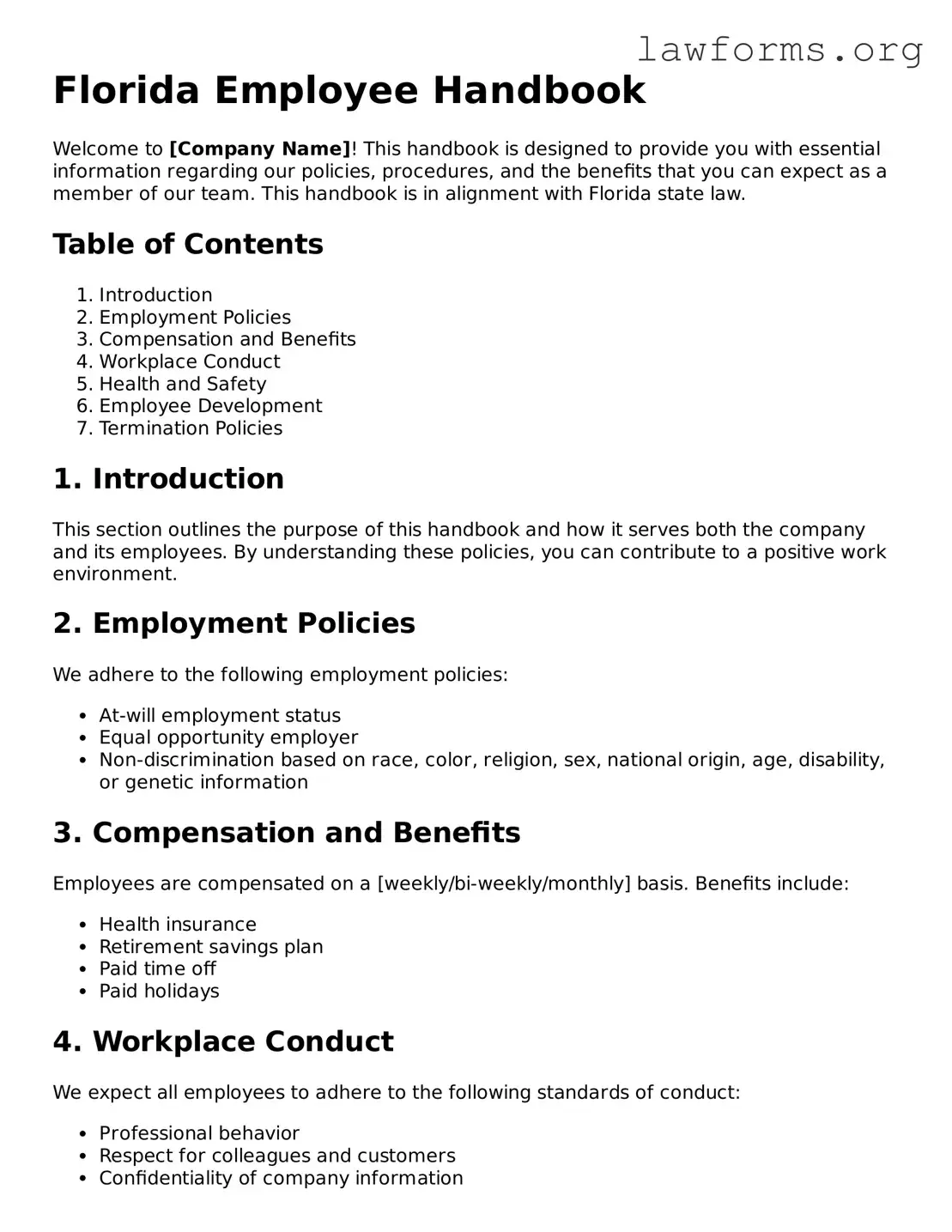Florida Employee Handbook
Welcome to [Company Name]! This handbook is designed to provide you with essential information regarding our policies, procedures, and the benefits that you can expect as a member of our team. This handbook is in alignment with Florida state law.
Table of Contents
- Introduction
- Employment Policies
- Compensation and Benefits
- Workplace Conduct
- Health and Safety
- Employee Development
- Termination Policies
1. Introduction
This section outlines the purpose of this handbook and how it serves both the company and its employees. By understanding these policies, you can contribute to a positive work environment.
2. Employment Policies
We adhere to the following employment policies:
- At-will employment status
- Equal opportunity employer
- Non-discrimination based on race, color, religion, sex, national origin, age, disability, or genetic information
3. Compensation and Benefits
Employees are compensated on a [weekly/bi-weekly/monthly] basis. Benefits include:
- Health insurance
- Retirement savings plan
- Paid time off
- Paid holidays
4. Workplace Conduct
We expect all employees to adhere to the following standards of conduct:
- Professional behavior
- Respect for colleagues and customers
- Confidentiality of company information
5. Health and Safety
Your health and safety are our priority. Please report any hazards or unsafe conditions to your supervisor. We encourage a culture of safety through:
- Regular safety training
- Emergency preparedness procedures
- Health and wellness programs
6. Employee Development
We are committed to your professional growth. Employee development opportunities include:
- Training programs
- Mentorship programs
- Performance reviews
7. Termination Policies
In the event of termination, whether voluntary or involuntary, we follow established procedures:
- Exit interviews
- Return of company property
- Final paycheck information
If you have any questions regarding the policies outlined in this handbook, please feel free to reach out to [HR Contact Name] at [HR Contact Email] or [HR Contact Phone]. Your understanding and adherence to these policies helps us maintain a harmonious workplace.
Once again, welcome to [Company Name]. We look forward to a successful journey together!
